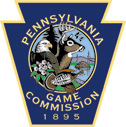Pa Game Commission Unveils New Habitat Improvement Signs

HARRISBURG, PA – -(AmmoLand.com)- Pennsylvania Game Commission Executive Director Carl G. Roe today announced that visitors to the agency’s more than 1.4 million acres of State Game Lands will start seeing a new crop of signs designed to educate the public about four of the primary methods of habitat improvement used to benefit wildlife.
“Each year, the agency spends more than 40 percent of its total budget on wildlife habitat improvements,” Roe said. “Each of these news signs will provide a short description about one of the four primary habitat management practices being employed by agency personnel and, in most cases, when it occurred.
“For decades, the Game Commission has been conducting these types of habitat enhancements, but too often the general public doesn’t readily recognize the efforts are deliberate and habitat-based. A good example is herbaceous openings, also referred to as ‘food plots,’ which many people believe are part of the natural landscape rather than ‘man made.”
Likewise, Roe noted that the agency’s use of prescribed fire is sometimes viewed as the result of arson or accidental fires, rather than a well-planned deliberate burns used to enhance or create wildlife habitat.
“If the sportsmen actually knew just how much habitat work is conducted on all our State Game Lands, they would certainly be impressed,” Roe said. “But, we have not always done a good job of telling visitors to State Game Lands exactly what has been done to improve wildlife habitat.”
Roe noted that the four practices that will be promoted by the signs are: Wildlife Openings, also called food plots or herbaceous openings; Prescribed Burn Area; Forest Management Area; and Deer Exclosure Fence.
The exact wording on the signs is as follows:
WILDLIFE OPENING: This herbaceous area benefits wildlife throughout the year. It is maintained to promote native plants, legumes, or annual grains. Maintenance may include planting, spraying, prescribed fire and mechanical treatments.
PRESCRIBED BURN AREA: This area was intentionally burned following a detailed plan to improve wildlife habitat. Prescribed fire is a safe, cost effective tool to reduce undesirable plants, improve soil conditions, and promote native plants. This burn was conducted on ____.
FOREST MANAGEMENT AREA: Trees in this area were cut to improve wildlife habitat. Removing over-story trees allows sunlight to reach the forest floor, resulting in greater food and cover available for wildlife. Harvests also generate revenue that is used to improve additional habitat on State Game Lands. Date Cut: ______________.
DEER EXCLOSURE FENCE: This fence is intended to reduce deer browsing on a limited area to allow regeneration of understory plants. The fence will be removed when adequate trees and shrubs are established, providing habitat for numerous wildlife species, including deer. Hunting is welcome and encouraged inside the fence. Please enter through the yellow access gates. This fence was installed on: ______________________.
Roe noted that each year, from mid-September through mid-October, the Game Commission hosts a series of State Game Lands tours to enable residents to see what the agency is doing on behalf of wildlife.
“State Game Land tours provide the opportunity for those who enjoy nature to come out and talk with our employees – the people who are directly responsible for managing and protecting these lands,” said Carl G. Roe, Game Commission executive director. “Coupled with these new signs, the agency is enhancing the public’s opportunity to see how the Game Commission is spending hunting and furtaker license fees to acquire and manage these lands for wildlife.”
In 1919, the Game Commission was granted authority to purchase lands for the protection, propagation and management of game and wildlife, and to provide areas for public hunting and trapping. Since that time, the Game Commission has acquired more than 1.4 million acres in 65 of the state’s 67 counties (Philadelphia and Delaware counties being the exceptions).
With few exceptions, State Game Lands were purchased using revenues from hunting and furtaker license sales; State Game Lands timber, coal, oil, gas and mineral operation revenues; the state’s share of a federal excise tax on sporting arms and ammunition, known as the Pittman-Robertson Program; from Working Together for Wildlife artwork and patch sales; and from the Pennsylvania Waterfowl Management stamp and print sales.
